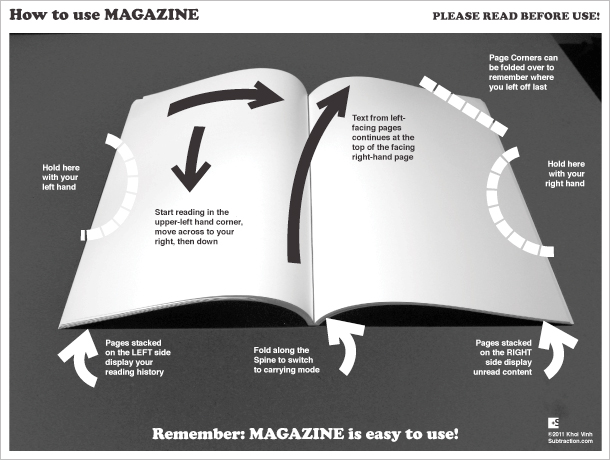 It’s no secret I have a pretty firm answer to the question of what constitutes a magazine. Despite the multi-channel content distribution reality for magazine media brands, a “magazine” is a tangible, concrete, ink-on-paper experience.
It’s no secret I have a pretty firm answer to the question of what constitutes a magazine. Despite the multi-channel content distribution reality for magazine media brands, a “magazine” is a tangible, concrete, ink-on-paper experience.
I don’t see that definition changing. What is changing is what a magazine can do for a brand. And we see change coming from outside the industry, like the Netflix magazine targeting the entertainment industry.
“By traditional publishing standards, the Netflix magazine will have an absurdly small footprint and is horribly inefficient,” writes D. Eadward Tree in Publishing Executive. “But its purpose is clear – to influence the people who vote on the Emmy awards.
“That probably means no more than a few thousand copies will be printed. Breaking through to entertainment-industry influencers will require top-notch writing, stunning photography, and bold design. I’d be surprised if the costs come out to less than $20 per copy. And it will be worth every penny if the magazine helps even a single show win an award.”
THIS is one of the new realities of magazine – not the mass market titles of the past that drove revenue through advertising and cut rate subscriptions, but highly targeted titles that work hard to raise brand awareness in key demographics.
Tree mentions Facebook’s print title, Airbnb Magazine, Casper and Callaway Golf of examples of brands outside of traditional publishing that are using print magazines effectively (i.e. to ultimately make more money). From dating apps to supermarket chains, print magazines are rapidly becoming the long pants of brand fashion.
“These outsiders to magazine publishing don’t represent a resurgence so much as a ‘rethinkance,’” Tree notes. “They have no interest in huge circulations, cut-rate subscriptions, traditional advertising deals, or other trappings of the ‘real’ magazine business. Even their motives for publishing magazines are different,”
Those motives – brand elevation, deep engagement with a highly specific audience, the trust bump that comes when brands work in print – are worth paying for. So while traditional publishers may continue to struggle with new business models in a world that looks entirely different now, a new age in magazines has clearly started.
As Tree notes, “… industries are usually revolutionized by the outsiders, not the entrenched.”
Brands are leveraging print to engage their most valuable audience in new ways. It’s not the good old days of magazines, but the brave new world of brand publishing that gets us out of bed in the morning.
